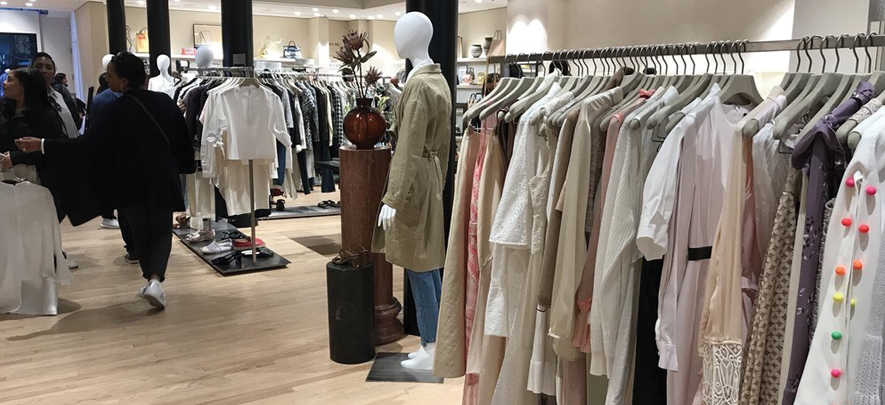Is ‘recommerce’ retail’s next big thing?

Retail
284 week ago — 5 min read
Background: Recommerce or reverse commerce, refers to the process of selling previously owned, or used products. Over the last few years, a fresh wave of retail concepts has created an entirely new, mostly high-end, recommerce market.
The luxury reseller The RealReal raised $300 million in its initial public offering and saw its shares soar nearly 45% before settling in at a market capitalization of $2.4 billion. Not too shabby.
Until very recently, the resale market was dominated by decidedly lowbrow thrift shops along with a smattering of more upscale mom and-pop consignment and vintage clothing stores. But over the last few years, a fresh wave of retail concepts has created an entirely new, mostly high-end, ‘recommerce’ market.
The RealReal, founded in 2011, has emerged as the luxury leader in the segment. But it has plenty of competition from similarly intended brands such as thredUP and Poshmark, along with category focused players like Stadium Goods. More traditional luxury players are getting in on the action as well, as Neiman Marcus recently invested in Fashionphile and Farfetch launched its SecondLife resale platform. Given investor interest in the model and the fact that the category is expanding at 5 times overall apparel sales, expect other major fashion brands to enter the fray.

Two trends emerge…
Upscale resale leans into two important and growing trends. The first is sustainability and the so-called ‘circular economy’. Giving extended life to fashion items helps reduce waste and is more broadly environmentally responsible. Second, as we are seeing across a spectrum of categories, many consumers are increasingly hesitant to pay full-price or are engaged in trading down as a way to save money. In some cases, this is driven purely by heightened price consciousness. Yet, for the luxury category in particular, recommerce allows more consumers to obtain products that were previously unaffordable or in very short supply.
Upscale resale leans into two important trends. The first is sustainability. Giving extended life to fashion items helps reduce waste. Second, many consumers are increasingly hesitant to pay full-price or are engaged in trading down as a way to save money.
Numerous studies, including an extensive one released earlier this year by threadUP, point to the significant growth potential the resale disruptors are addressing. And their initial success—and strong momentum—is undeniable. Yet, the future is far from certain. Like most of the digitally-native disruptive brands that have attracted boatloads of venture capital and received sky high valuations, the playbook is by now quite familiar.
Also read: Experience explained
The outlook
Investment in slick websites, ‘seamless’ order management systems and efficient supply chains are met with big spending on branding and customer acquisition. After a few years, the limits of pure-play e-commerce become obvious and the once digital-only enamoured startups become brick & mortar covetous—and a physical store strategy starts to take shape.
Once financials become public, we often learn that these highly admired businesses are still rather small and quite unprofitable. For perspective, TheRealReal’s annual revenues are less than 2% of Nordstroms’ total and don’t amount to much more than one really good Neiman Marcus store’s volume. Moreover, last year they lost more than 30 cents on the dollar and losses grew more than 40% year-over-year. As the resale brands are now engaged in an escalating customer land grab and embarking upon expensive physical store roll-outs, the possibility for decent financial returns seems many years out.
So whether we call it the resale or the recommerce market, it is clear that these disruptive brands are garnering plenty of customer and investor attention. Whether the financial returns will prove to be as sustainable as the underlying business model is, alas, much less certain.
Also read: It's about the story
Article by Steve Dennis published in STOrai Magazine. Steve Dennis is a consultant, speaker and writer on retail innovation, omni-channel strategy and marketing personalization. As President of SageBerry Consulting, he leverages over 30 years of experience to help retail and luxury industry clients accelerate their growth and become more customer-centric.
Disclaimer: The views and opinions expressed in this article are those of the author and do not necessarily reflect the views, official policy or position of GlobalLinker.
View STOrai 's profile
Other articles written by STOrai Magazine
The Art & Science of People Pleasing in Retail
13 week ago
Enhanced Brand Storytelling in the Digital Age
45 week ago
Most read this week
Trending
The Art & Science of People Pleasing in Retail
Retail 13 week ago













Comments
Share this content
Please login or Register to join the discussion